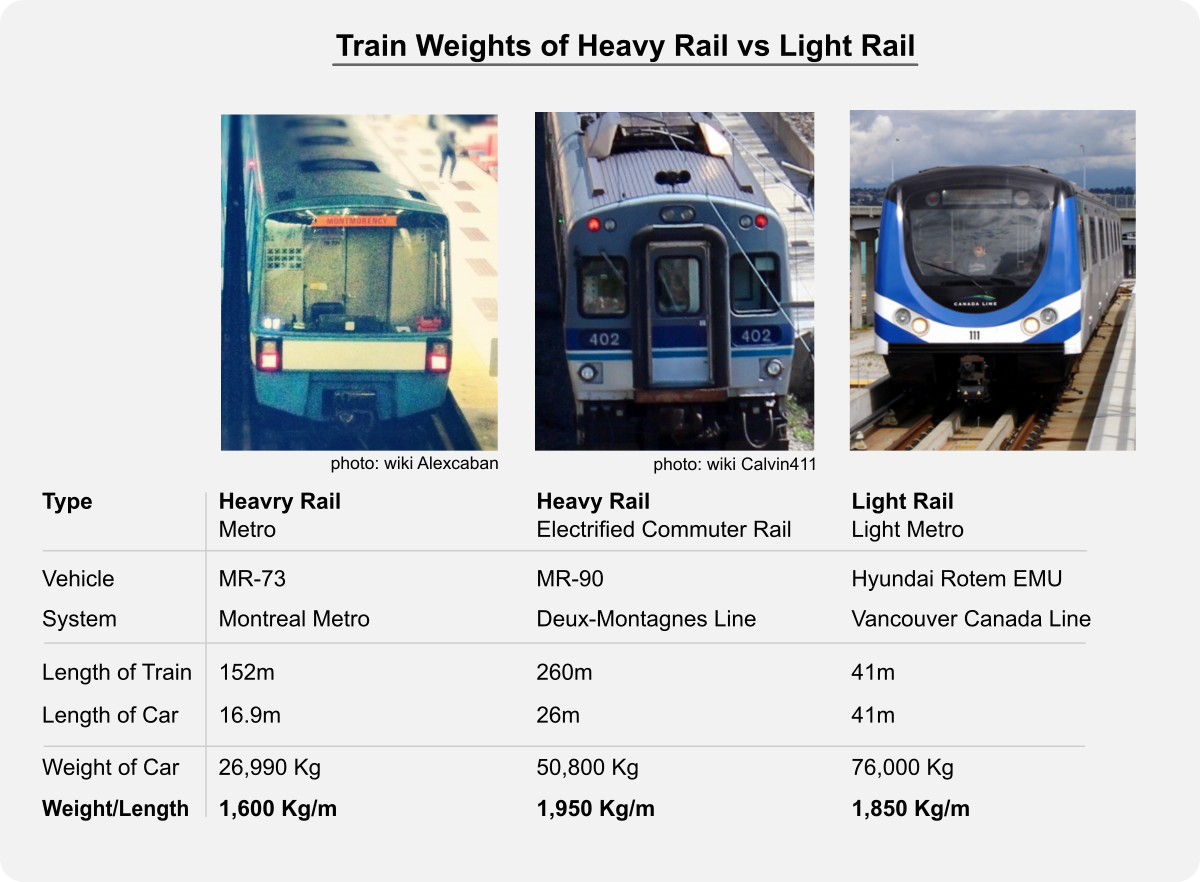Light Rail Vs Heavy Rail Light rail is designed to address a gap in interurban transportation between heavy rail and bus services carrying high passenger numbers more quickly than local buses and more cheaply than heavy rail It serves corridors in which heavy rail is impractical Light metro systems are essentially hybrids of light rail and rapid transit
A light rail transit LRT system is an urban rail transit system with a light passenger capacity compared to heavy rail and metro systems Its operating characteristics are that it uses railcars called light rail vehicles LRVs operating singly or in short multiple unit trains on fixed rails in a right of way that is not necessarily Light Rail This mode began appearing in North America in the late 1970s Light rail offered a cheaper method to create a regional system and have become popular as substitutes to heavy rail They serve corridors where heavy rail investment is
Light Rail Vs Heavy Rail

Light Rail Vs Heavy Rail
http://transitnky.weebly.com/uploads/2/6/0/6/26062495/1901534_orig.jpg

An Update On Mangere And Airport Rail Greater Auckland
https://i0.wp.com/greaterakl.wpengine.com/wp-content/uploads/2015/08/Rail-to-Airport-July-15-LRT-vs-HRT-figures.jpg?resize=800%2C549

Heavy Rail Vs Light Rail The Q254 Heads Southbound Over J Flickr
https://live.staticflickr.com/429/31334580784_afe8311e61_b.jpg
9 564 views 11 months ago In today s video we talk about the similarities and differences of light rail and heavy rail transit systems Make sure to like comment subscribe more LRT requires a significantly smaller investment than highways heavy rail and commuter rail LRT can also minimize expenses by integrating with existing transit infrastructure Attracts more riders from other modes by providing passengers a better riding experience
Heavy rail uses longer trains than light rail to move more passengers Spacing between stations must be longer than with light rail as well This is due to the distances required for accelerating and decelerating This video goes over the history of the distinction between light and heavy rail in American public transit planning From the origin of light rail in an ada
More picture related to Light Rail Vs Heavy Rail

Introducing ATL Trains A Revolutionary Approach To Atlanta Transit
https://atlanta.urbanize.city/sites/default/files/styles/950w/public/2022-08/ATL Trains cost per mile.png?itok=Ih_I0cjM

Metro Cincinnati Transit 101 Heavy Rail And Light Rail
http://metro-cincinnati.org/wp-content/uploads/2010/08/rtd_lg.jpg

Heavy Rail Light Rail YouTube
https://i.ytimg.com/vi/vbFDVBllCs8/maxresdefault.jpg
Light rail or light rail transit LRT is a form of urban rail public transportation that generally has a lower capacity and lower speed than heavy rail and metro systems but higher capacity and higher speed than traditional street running tram systems LRT is a transportation system based on electrically powered light rail vehicles LRV that operates on a track in a dedicated right of way meaning separated lanes They are designed to deliver rapid reliable and safe transportation services
[desc-10] [desc-11]

Catbus Blog Archive How The Caisse s Light Rail System Will
http://www.cat-bus.com/wp-content/uploads/2016/05/train-weight-comparison.png

RAILBASTARD View Topic Light Rail Vs Heavy Rail Passenger Light
https://i.pinimg.com/736x/96/da/4f/96da4fd82521de38bd58b55d38da26f7--light-rail.jpg
Light Rail Vs Heavy Rail - 9 564 views 11 months ago In today s video we talk about the similarities and differences of light rail and heavy rail transit systems Make sure to like comment subscribe more